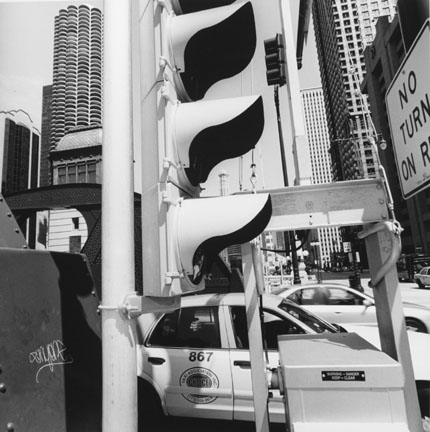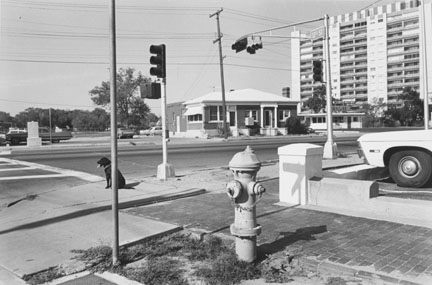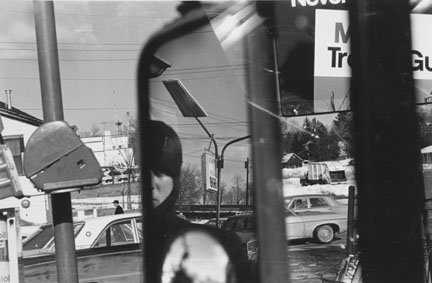About the Photographer
Friedlander, Lee
American, b.1934
Lee Friedlander's unique vision underscores the two-dimensionality of the picture plane and the potential for photographs to contain varying levels of reflection, opacity, and transparency. Like Atget's photographs, Friedlander's images of shop windows evoke a certain ambiguity, an oscillation between reflected and actual reality, that invite inspection of the space and the meaning of the image. Similar responses are encouraged by Friedlander's street photographs, in which shadows of figures (usually Friedlander himself) and other subjects overlap in the photographic image. The projected outline of Friedlander's body as within the picture frame implies the notion that the photographer can be both behind the camera and in front of it. Interpreted further, Friedlander's shadow can be taken to represent the imposition of the photographer upon his world and his subject.
Washington, DC is an image from Friedlander's The American Monument project executed in the planar style for which he is known. Collapsed into the flat photograph are a car window, a side mirror, and a boulevard that extends into the distance, dividing the space of the frame. The American Monument project documents how nondescript memorials in the United States are folded into changing landscapes. As the context and environment of these objects has changed over time, many have not retained their initial meaning or significance. Friedlander details the motifs and symbols of public memory that go unnoticed. His style does not compromise the marginality of each plaque or statue; instead it calls attention to the new surroundings that have developed around these objects. In Phoenix, 1975, for example, the subject is not readily apparent; the monument is situated unobtrusively, camouflaged by a tree and cacti. Photographing plaques and statues dedicated to a diverse array of military figures, poets, statesmen, Native Americans, and Puritans, Friedlander collected thousands of images of these lonely, silent markers as one might glimpse while walking or driving.
Lee Friedlander was born in 1934 in Aberdeen, Washington. He began photographing in 1948 because of a "fascination with the equipment," in his words. He later attended the Art Center School in Los Angeles to become a professional photographer, but soon left. He moved to New York in 1956 and began freelancing. As he sought out magazine assignments, he eventually met a group of photographers who would change his life: Robert Frank, Diane Arbus, Garry Winogrand, Louis Faurer, Helen Levitt, Richard Avedon, and Walker Evans. Friedlander has been awarded John Simon Guggenheim Memorial Foundation Fellowships and a National Endowment for the Arts Fellowship. His work has been widely exhibited and is included in the collections of the Baltimore Museum of Art; Museum of Fine Arts, Boston; Center for Creative Photography, University of Arizona, Tucson; Corcoran Gallery of Art, Washington, DC; Museum of Fine Arts, Houston; Museum of Modern Art, New York; and the Smithsonian Institution, Washington, DC, among other international collections. The Museum of Contemporary Photography exhibited his series At Work and Sticks and Stones in 2005. Additionally, Friedlander is credited with preserving the work of New Orleans photographer E.J. Bellocq.




